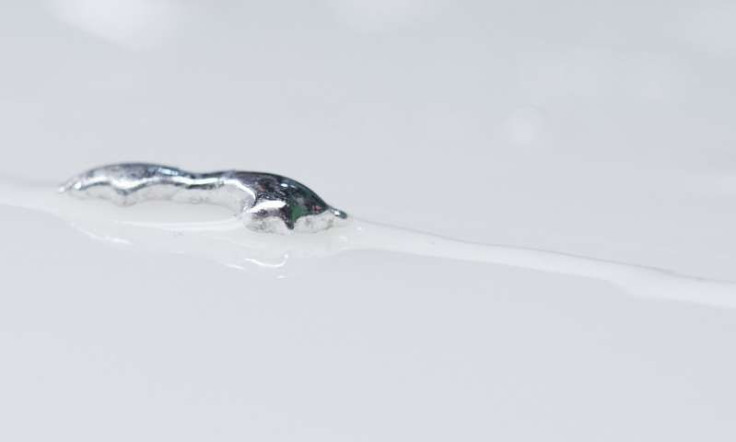New Atom-Thin Liquid Metal Layers Could Change Electronics Forever

A team of scientists from Royal Melbourne Institute of Technology (RMIT) University, Melbourne, Australia, used liquid metal to create two-dimensional material that is just a few atoms thick. These ultra-thin flakes of metals were created for the first time and the team feels that this discovery will revolutionize electronics.
The results published in the journal Science Magazine has potential applications in all-things-electronic. Achieving atom-thin conductors will change the way we transport electricity, store data or even do chemistry.
The researchers achieved this by creating an oxide layer of the metal. When metals are dissolved in liquid metals, they create very thin oxide layers. When reared, these oxide layers can be used as transistor components in modern electronics.
Oxide layers are already used widely. Devices as indispensable as smart-phones rely on oxide layers to function. In fact, all touch-screens devices use oxide layers. The oxide layer is used to coat the touch screen to help it hold a charge, creating an electrostatic field over the screen. When the screen is touched, there is a disruption or rearrangement of these charges to counter the conductance of the human finger. This means that the human body can conduct and store charges and this property causes a change in the electrostatic field on the screen. A processor picks up the location of this change and also the pattern, thereby detecting touches and swipes accordingly.
So, the thinner the oxide layer, the faster electronics can become. Lesser power is required to make devices function which will improve efficiency.
Professor Kourosh Kalantar-zadeh and Torben Daeneke from RMIT's School of Engineering led the team with students who have been experimenting with the method for one and a half years.
Certain materials produce thin layers naturally. The graphite in pencils forms a thin layer on the paper when rubbed. What the team did was create a way to make this possible for a range of materials.
Kalantar-zadeh said in a Phys.Org report that the discovery now places previously unseen thin oxide materials into everyday reach, with profound implications for future technologies.
"We predict that the developed technology applies to approximately one-third of the periodic table. Many of these atomically thin oxides are semiconducting or dielectric materials,” Kourosh added.
According to Daeneke, the method is really simple but has very wide implications. "We use non-toxic alloys of gallium as a reaction medium to cover the surface of the liquid metal with atomically thin oxide layers of the added metal rather than the naturally occurring gallium oxide. This oxide layer can then be exfoliated by simply touching the liquid metal with a smooth surface. Larger quantities of these atomically thin layers can be produced by injecting air into the liquid metal, in a process that is similar to frothing milk when making a cappuccino," he said.
The process is very simple and effective at producing atom-thin sheets of metal over and over again. "I could give these instructions to my mum, and she would be able to do this at home," Daeneke said in the report.
Semiconductors and dielectrics form the foundation of electronics today. Every device needs them to function. Using atom-thin components will increase energy efficiency drastically. The simplicity of the procedure could see it being implemented widely in the chemical industry, says the report. The technology developed can be used in a chemical process called catalysis to improve efficiency. Catalysis is one of the most widely used processes in the modern manufacturing industry. Bettering it could see huge gains in terms of production efficiency.
© Copyright IBTimes 2024. All rights reserved.





















